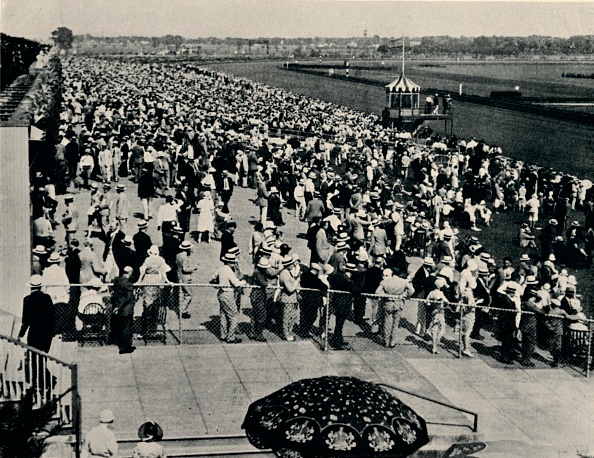Mount Shasta Bed and Breakfast has a Fascinating Regional History & Lore

The oldest known human habitation in the Mt Shasta area dates to about 7,000 years ago, and by about 5,000 years ago, there was substantial human habitation in the surrounding area. At the time of Euro-American contact in the 1820s, the Native American tribes who lived within view of Mount Shasta included the Shasta, Okwanuchu, Modoc, Achomawi, Atsugewi, Karuk, Klamath, Wintu, and Yana tribes.
The historic eruption of Mount Shasta in 1786 may have been seen by the first Spanish explorers, the first reliably reported land sighting of Mount Shasta by a European or American was by Peter Skene Ogden, a leader of a Hudson’s Bay Company trapping brigade, in 1826. Beginning in the 1820s, Mount Shasta was a prominent landmark along what became known as the Siskiyou Trail, which runs at Mount Shasta’s base. The Siskiyou Trail was located on the track of an ancient trade and travel route of Native American footpaths between California’s Central Valley and the Pacific Northwest.
The California Gold Rush brought the first Euro-American settlements into the area in the early 1850s, including Yreka and Upper Soda Springs. The first recorded ascent of Mount Shasta occurred in 1854, by Elias Pearce, after several earlier failed attempts. In 1856, the first women, Harriette Eddy, Mary Campbell McCloud, and their party, reached the summit.
By the 1860s and 1870s, Mount Shasta was the subject of scientific and literary interest. A book by California pioneer and entrepreneur James Hutchings, titled Scenes of Wonder and Curiosity in California, contained an account of an early summit trip in 1855. The summit was achieved,or nearly achieved, by John Muir, Josiah Whitney, Clarence King, and John Wesley Powell. In 1877, Muir wrote a dramatic popular article about an experience in which he survived an overnight blizzard on Mount Shasta by lying in the hot sulfur springs found near the summit.
The 1887 completion of the Central Pacific Railroad, built along the line of the Siskiyou Trail between California and Oregon, brought a substantial increase in tourism, lumbering and population into the area around Mount Shasta. Early resorts and hotels, such as Shasta Springs and Upper Soda Springs, grew up along the Siskiyou Trail around Mount Shasta, catering to these early adventuresome tourists and mountaineers. In the early Twentieth century, the Pacific Highway followed the track of the Siskiyou Trail to the base of Mount Shasta, leading to still more access to the mountain. Today’s version of the Siskiyou Trail, Interstate 5, brings thousands of people a year to Mount Shasta. It was declared a National Natural Landmark in December 1976.
Native American Legend
There is no doubt that Mount Shasta has long been viewed as a sacred place by a number of Native American groups, and the special relationship has caused the mountain to play a significant role in their customs, myths, legends, and folktales. The lore of some of the Klamath Tribes in the area held that Mount Shasta is inhabited by the Spirit of the Above-World, Skell, who descended from heaven to the mountain’s summit at the request of a Klamath chief. Skell fought with Spirit of the Below-World, Llao, who resided at Mount Mazama by throwing hot rocks and lava.
Modern-day Native American rituals: A group of Native Americans from the McCloud River area practice rituals on the mountain. Mt. Shasta, in its entirety, continues to be held by northern California Indian peoples as a sacred entity within their physical environment. The mountain figures prominently in myths and legend that recall significant deeds of times past in general, and specifically world creation for some Native American groups. For some, areas of significance traditionally are divided at the tree line, and many Indian people would not, unless under very special circumstance, ascend the mountain above the tree line. Purification has been a requirement as part of an individual’s preparation for an approach to the mountain. The individual’s behavior and activities on Mt. Shasta should leave the mountain in an unaltered state.
Modern Myth & Legend
Italian settlers arrived in the early 1900s to work in the mills and as stonemasons establishing a strong Catholic presence in the area. Many other faiths have been attracted to Mount Shasta over the years as well, more than any other Cascade volcano. Mount Shasta City and Dunsmuir, California, small towns near Shasta’s western base, are focal points for many of these varied and diverse ways of worship, which range from a Buddhist monastery to the “I AM” movement and many others.
Mount Shasta has also been a focus for non-native American legends, centered on a hidden city of advanced beings from the lost continent of Lemuria. Perhaps the most popular example of Mount Shasta lore, and a legend involving the first claim by non-Native Americans for a spiritual connection with the mountain, concerns the mystical brotherhood believed to roam through jeweled corridors deep inside the mountain. According to Miesse, “In the mid-19th Century paleontologists coined the term “Lemuria” to describe a hypothetical continent, bridging the Indian Ocean, which would have explained the migration of lemurs from Madagascar to India.
Lemuria was a continent which submerged and was no longer to be seen. By the late 19th Century occult theories had developed, mostly through the theosophists, that the people of this lost continent of Lemuria were highly advanced beings. The location of the folklore ‘Lemuria’ changed over time to include much of the Pacific Ocean. In the 1880s a Siskiyou County, California, resident named Frederick Spencer Oliver wrote A Dweller on Two Plants, or, the Dividing of the Way which described a secret city inside of Mount Shasta, and in passing mentioned Lemuria. In 1925 a writer by the name of Selvius wrote “Descendants of Lemuria: A Description of an Ancient Cult in America” which was published in the Mystic Triangle, Aug., 1925 and which was entirely about the mystic Lemurian village at Mount Shasta. In 1931 Wisar Spenle Cerve published a widely read book entitled Lemuria: The Lost Continent of the Pacific in which the Selvius material appeared in a slightly elaborated fashion. The Lemuria-Mount Shasta legend has developed into one of Mount Shasta’s most prominent legends.
New Age Prominence
In 1971, a Buddhist monastery was founded on Mt. Shasta by Houn Jiyu-Kennett, Shasta Abbey, and Mt. Shasta was one of the sites of the 1987 Harmonic Convergence, a gathering at a number of power points in the hope that united spiritual energy might avert world catastrophe and usher in an age of harmony and peace. Believers in the spiritual significance of the Harmonic Convergence described Mount Shasta as one of a small number of global “power centers”. Mount Shasta remains to this day, very much a focus of “New Age” attention. Over the years, Mt. Shasta has taken on a new religious meaning. Over 100 New Age sects and groups now regard the impressive mountain as a sacred source of harmony and peace. Mt. Shasta has been identified by various groups as a cosmic power point, a UFO landing spot, the entry point into the fifth dimension, a source of magic crystals and one of the Seven Sacred Mountains of the World.
In 1930, Guy Ballard, founder of the “I AM” movement, reported that he met the Ascended Master St. Germaine on the slopes of Mt. Shasta. Ascended Masters are spiritually advanced beings who manifest “the luminous essence of divine love” and assist human evolution. These teachings have been especially popularized by Elizabeth Clare Prophet, a prominent New Age teacher.
Curley Brown – A Fascinating Founder
Harry D. Brown was a completely self made man! He was born in Iowa on March 19, 1863 an spent his boyhood there. He left home at an early age and got his start on a cattle ranch in Montana. In later years, while working ranches in Helena and Butte, he became interested in racing stock. He had a gut feeling that there was money to be made racing horse, and he was correct! Though there were rough patches and fights, some physical Brown toughed it out and eventually became a millionaire.
Millionaire Contractor Builds California Ranch
In 1918, the millionaire race track contractor H.D. “Curley” Brown came to Northern California seeking suitable pasturage for his famous racing horses. Brown believed the high altitude, pure water and rich grasses in the Mount Shasta area would produce healthy, fast horses. Brown bought 1,577 acres southwest of Sisson, which is now Mount Shasta City. Sparing no expense, he built a grand ranch he called Brownshasta.
The ranch reflected the lavish style of Arlington Park in Chicago, considered Brown’s crowning achievement. Its tracks and trails, country clubs and sports facilities made the park a playground for racing enthusiasts. The Brownshasta ranch house had five sumptuously furnished bedrooms with private baths. The estate had an eight-car garage, four guest cottages, a tennis court and a swimming pool. Brown built a horse barn costing $50,000 for his prized thoroughbreds, each named Shasta. The barn was 600 feet long with 60 floored boxed stalls, all equipped, like the house, with piped-in water and electricity. The estate also had a farm, gardens, and equestrian and foot trails.
Curley Builds His Dream Track
When public betting on thoroughbred racing was restored in Illinois in the Roaring `20s, Harry D. “Curley” Brown came to Chicago with a vision of grandeur. “My intention,” he announced, “is to build for this city the most beautiful track in America.” Eventually, Brown found what he regarded as the perfect location-farmland northwest of the city with a new highway and a railroad right-of-way beckoning to residents of the metropolis on the shores of Lake Michigan. On June 27, 1927, Curley stuck a shovel in some fertile soil next to a section of Chicago & Northwestern Railroad right-of-way and unearthed the beginnings of Arlington Park. Brown was an itinerant Californian who built racetracks the way Helmut Jahn builds office buildings – frequently! During his 50 years in the business, Brown made tracks in Maryland, Florida, New Orleans and Havana. Arlington, then just a 1,200-acre patch of farmland northwest of Chicago, was to be his greatest achievement.
The Tribune called his track, “The greatest racecourse in America and one of the greatest in the world.” The Arlington Race Track, Chicago, c 1930. The track officially opened in 1927 to 20,000 spectators. The afternoon on which Arlington entered the racing world was raw and blustery. Nevertheless, an estimated 20,000 people came to see the amazing change that Brown had wrought in what had been prairie farmland only a few months before.
Later Years
During the last years of his life “Curley” traveled nearly all the time, he owned property in New York, Florida, Illinois, Utah, California and had an extensive gold-mining interest in Nevada! When he wasn’t taking care of his interests elsewhere he would return to Mt. Shasta. He worked consistently on the Snowline highway project, which he had laid the plans for and developed the program even attending a conference regarding the project in April of 1930. He did not live to realize his dream of a highway winding up to Mt Shasta however, he passed away in late spring of 1930. The stores in Mt. Shasta closed for nearly 3 hours on the day of his funeral so all could attend.

